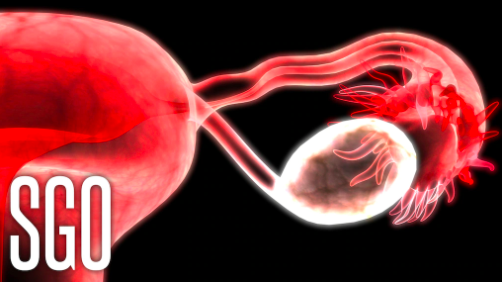By Chase Doyle
The addition of niraparib maintenance to first-line platinum-based chemotherapy with bevacizumab demonstrated clinical benefit in patients with advanced ovarian cancer, according to data from the OVARIO study presented by Melissa M. Hardesty, MD, MPH, during the Society of Gynecologic Oncology (SGO) 2021 Virtual Annual Meeting on Women’s Cancer.
Landmark analysis of the phase II OVARIO study showed that 62% of patients in the overall population remained progression-free at 18 months, including 76% of patients in the homologous recombination–deficient (HRD) subgroup and 47% of patients in the homologous recombination–proficient (HRP) subgroup.
“OVARIO enrolled a high-risk population of patients with ovarian cancer,” said Dr. Hardesty, a gynecologic oncologist at Alaska Women’s Cancer Care in Anchorage. “Despite these high risks, results were favorable compared to other upfront maintenance treatment trials.”
As Dr. Hardesty reported, monotherapy with niraparib, a small-molecule inhibitor of poly ADP-ribose polymerase (PARP), has been shown to improve progression-free survival in patients with newly diagnosed, recurrent, and heavily pretreated ovarian cancer after platinum-based chemotherapy in all biomarker-defined subgroups. It is also hypothesized that bevacizumab may sensitize tumors to PARP inhibition. In the AVANOVA study, the addition of bevacizumab, a vascular endothelial growth factor (VEGF) inhibitor, demonstrated a significant improvement in progression-free survival compared with niraparib alone in patients with recurrent, platinum-sensitive ovarian cancer.
Results From OVARIO
OVARIO, a single-arm, open-label study, evaluated niraparib plus bevacizumab maintenance treatment in patients with advanced ovarian cancer after response to first-line platinum-based chemotherapy plus bevacizumab. All patients with newly diagnosed high-grade serous or endometrioid stage IIIB to IV ovarian cancer who had a complete response, partial response, or no evidence of disease after first-line platinum-based chemotherapy plus bevacizumab were eligible, as were patients receiving neoadjuvant chemotherapy or primary debulking surgery. All patients also underwent tissue testing for HRD or HRP at enrollment.
Progression-free survival rates in the overall population were 90% and 75% at 6 months and 12 months, respectively. At 18 months, the progression-free survival rate was 62% in the overall population and 76% in the HRD population.
The safety of niraparib plus bevacizumab maintenance was also consistent with the known side effects of each drug as monotherapy. Findings showed that 99% of patients experienced a treatment-emergent adverse event of any grade, with 77% of patients experiencing a grade ≥ 3 treatment-emergent adverse event. The most common grade ≥ 3 or grader treatment-related adverse events were thrombocytopenia (39%), anemia (34%), and hypertension (27%).
Twenty-seven percent of patients discontinued treatment due to a treatment-related adverse event; although the rate of treatment discontinuation was higher for the combination therapy than for monotherapy alone, authors of the study noted that it was consistent with other studies that examined the combination of a PARP inhibitor plus bevacizumab.
Key Points
- At the 18-month landmark analysis of the phase II OVARIO study, 62% of patients receiving niraparib plus bevacizumab maintenance remained progression-free following response to first-line platinum-based chemotherapy with bevacizumab.
- No new safety signals were observed.
Disclosure: This study was funded by GlaxoSmithKline.
This article was published by The ASCO Post.


